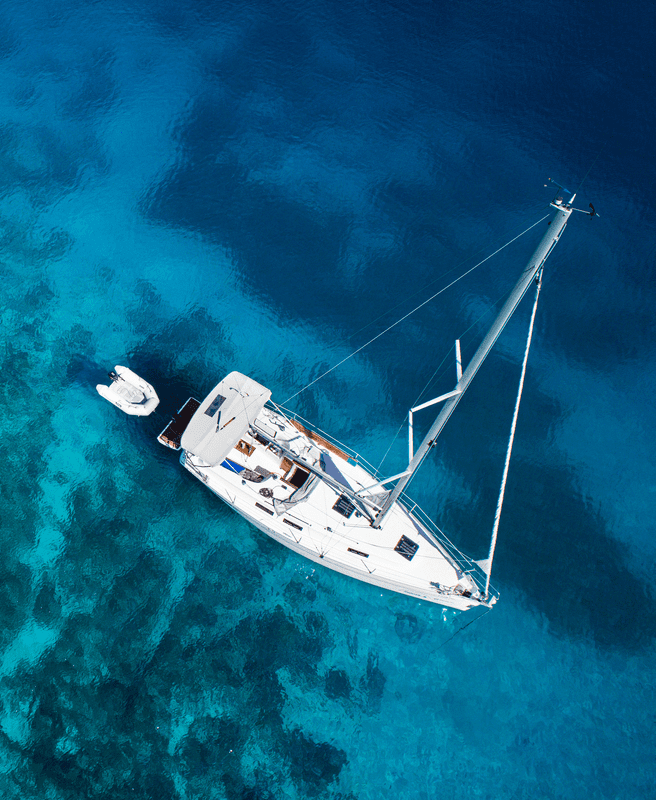US FEIE: How the Bona Fide Residence Test Works
June 30, 2022
Last Updated August 14, 2020
Dateline: Kuala Lumpur, Malaysia
If you’re a US citizen looking to legally reduce your tax burden, chances are you’ve considered pursuing the Foreign Earned Income Exclusion.
Since the US uses a system of citizenship-based taxation, US citizens and permanent residents must file income tax returns every year – regardless of whether they actually live in the US or earn any money there.
Unlike countries that use residential tax systems, such as Canada or the UK, US citizens cannot simply cut ties, leave the country, and become tax non-residents.
They can, however, use the Foreign Earned Income Exclusion to enjoy a little relief.
While you still have to file tax returns each year as a US person, you can exclude a large portion of your active income if you live and work abroad.
For US citizens, the Foreign Earned Income Exclusion is the backbone of any strategy to legally reduce your taxes offshore. However, to qualify for it, you must meet the requirements of one of two tests:
The Physical Presence Test or the Bona Fide Residence Test.
Of these two tests, the Physical Presence Test is the simpler one by far. To qualify, you must spend at least 330 days outside of the US during a 12-month period.
Although you’re limited to around 30 days in the US per year, qualifying for the Foreign Earned Income Exclusion under the Physical Presence Test is fairly straightforward.
The Bona Fide Residence Test, on the other hand, gives you more time in the US per year, but meeting its requirements can be a bit more challenging.
We have discussed both tests before in our Ultimate Guide on the Foreign Earned Income Exclusion, but today I want to take you on a deeper dive into the Bona Fide Residence Test to clarify what it is, who should use it, and how you can qualify.
What Is The Bona Fide Residence Test?
To qualify under the Bona Fide Residence Test, you must be a tax resident of another country for a full tax year (January 1 – December 31), and you must establish that residency with the intention of permanently leaving the US.
In general, you should spend at least half the year in your new tax home and prove that it is your center of life by creating real connections in the country such as obtaining a permanent residence permit, getting a driver’s license, receiving electric bills in your name, and having ties to the local community.
If you can do this, you can spend roughly four months of the year in the US and still exclude any income earned while living overseas. You cannot, however, exclude any of the income you earn while visiting and working in the United States for those four months.
While the Bona Fide Residence Test gives you the ability to spend more than just 30 days in the US, it’s a harder threshold to meet, so even minor missteps could cause you to lose your offshore tax status. Proper planning is required.
If you’re thinking of using the Bona Fide Residence Test to qualify for Foreign Earned Income Exclusion, first determine whether you can – and should – use it to lower your US tax bill.
Who Should Use the Bona Fide Residence Test?
Although you can easily qualify for the Foreign Earned Income Exclusion under the Physical Presence Test, it severely limits the amount of time that you can spend in the United States.
For many people looking to get out of the US tax net, this isn’t much of an issue.
Before I renounced my US citizenship, I used the Physical Presence Test to qualify for the FEIE, and frankly, I wasn’t too upset about limiting my days in the US.
I felt more comfortable making friends and meeting women outside of the US, and I wanted to be part of other cultures. I had no desire to spend much – if any – time back home.
So, for me, the Physical Presence Test worked best, and the same goes for many other people who want to go offshore and become global citizens.
If you want to move offshore permanently, then you’ll likely find it easy to limit the time you spend in the US.
However, that’s not the case for everyone.
You may want to spend more than 30 days with your family each year, or you might need more flexibility to attend to your US business interests.
If you are in this situation and do not want to limit your time in the US to just 30 days a year, then you should consider using the Bona Fide Residence Test to qualify for the Foreign Earned Income Exclusion.
How Can You Qualify for the Bona Fide Residence Test?

Although it’s fairly easy to get a second residence in Panama, it doesn’t guarantee that you’ll qualify for Foreign Earned Income Exclusion.
Although I generally recommend that people use the Physical Presence Test to qualify for the Foreign Earned Income Exclusion, using the Bona Fide Residence Test can be beneficial in some cases.
To meet the requirements of the Bona Fide Residence Test, you must:
- Be a tax resident of a foreign country for more than one uninterrupted tax year;
- Intend to reside in that country for an extended or indefinite amount of time; and
- Not qualify as a US person under the Substantial Presence Test.
These requirements aren’t terribly complex, but meeting the threshold of the Bona Fide Residence Test isn’t as simple as just staying out of the US. Bad information and poor planning can easily cause you to lose your offshore status.
For example, a couple once approached me claiming that they had found a way to qualify under the Bona Fide Residence Test and spend most of their year in the US.
They had recently attended an offshore conference where they learned about getting tax residency in Panama, where you only need to spend a day in the country per year to maintain your resident status.
Then, according to the couple, they could spend the majority of their time in the US while qualifying for the Bona Fide Residence Test due to their Panamanian residency.
Unfortunately for them, it’s not that easy.
While getting a second residence in Panama isn’t the worst idea, their plan falls far short of meeting the requirements of the Bona Fide Residence Test.
That’s the problem with those kinds of conferences – they make going offshore sound quick and simple when, in reality, it takes time, patience, and planning.
One of the many misconceptions floating around about the Bona Fide Residence Test is that you can easily establish a second residence elsewhere to qualify for the FEIE.
While the second residence is certainly important, it won’t happen overnight, and you need to do more than just say you pay tax elsewhere to take advantage of Foreign Earned Income Exclusion.
Although it’s fairly easy to get a second residence in Panama, it doesn’t guarantee that you’ll qualify for the Foreign Earned Income Exclusion.
[Update August 2020: Due to COVID-19, the US Treasury Department and the IRS issued a procedure that allows US expatriates who would have otherwise qualified for the FEIE if not for the coronavirus to still exclude their foreign earned income from federal taxation. You can read more about the time waiver here.]
Establish a Foreign Tax Residence
If you plan to use the Bona Fide Residence Test, the most important part of your offshore strategy is to establish tax residence in another country.
Fortunately, in many countries, getting tax residency isn’t too difficult – even in low- or no-tax countries.
In Costa Rica, for example, anyone with a monthly income of over $2,500 can become a tax resident rather easily, and in nearby Guatemala, you need to make only $1,250 per month to qualify.
If South America isn’t your cup of tea, then you can head to glamorous Monaco, where buying real estate can be a gateway to residency, or you can move to bustling Kuala Lumpur, Malaysia.
However, establishing tax residence in any of these countries comes with some kind of catch.
When you decide where you want to establish your offshore tax residence, you’ll need to consider factors like time, residency requirements, and cost.
Getting your residency permit in Costa Rica takes at least six months – if you can find a competent attorney, that is – and to maintain tax residency in Guatemala, you need to spend nearly all of your time there.
Monaco and Malaysia, on the other hand, are easier, but more expensive.
Malaysia requires you to buy real estate or deposit around $70,000 in a Malaysian bank; and to establish residency in Monaco, expect to spend upwards of $1,100,000.
Therefore, as you plan to establish bona fide residence outside of the US, ensure that you understand how you can establish tax residence in your country of choice and prepare accordingly.
Reside In Your New Tax Home Indefinitely

A two-year gig in Germany will not be enough to qualify you for the FEIE via the Bona Fide Residence Test.
After you establish a foreign tax residence, you need to actually live there to use the Bona Fide Residence Test.
You can’t just say you’re a tax resident and call it a day.
Put simply, your tax home needs to be your new home, and you need to plan to live there for the foreseeable future.
To see how this requirement works, let’s take a look at a couple of examples.
Suppose you’re a US citizen who accepts a position at a firm in Berlin.
If the position is a fixed two-year contract, then you would not be able to claim the exclusion under the Bona Fide Residence Test because the term of your stay isn’t indefinite if you only plan to stay for two years.
On the other hand, if the position is long-term, you could easily establish a bona fide residence in Germany.
And because you could establish tax residence in Germany while moving there permanently for the position, you would qualify for exclusion under the Bona Fide Residence Test.
Although the IRS can make case-by-case decisions for frequent business travelers, you ultimately need to spend most of your time in your country of residence to qualify under this test.
Claiming the Foreign Earned Income Exclusion under the Bona Fide Residence Test isn’t as simple as claiming you pay tax somewhere else.
This requirement is why I often suggest using the Physical Presence Test over the Bona Fide Residence Test.
The Physical Presence Test merely requires you to be out of the country. The IRS doesn’t necessarily care where you’re living or if you have tax residence elsewhere.
Bona fide residence, on the other hand, is much more difficult to establish.
You need to plan your travels so that you spend enough time there, and you need to be able to justify your tax home as your real home to the IRS.
Avoid Triggering the Substantial Presence Test
Once you’ve found and established your new bona fide residence, you then need to consider the Substantial Presence Test if you travel frequently to the US.
Another common misconception about the Bona Fide Residence Test is that it grants you unlimited time in the US as long as you maintain your offshore tax residence.
However, even if you meet all the requirements of the Bona Fide Residence Test, you can still lose your Foreign Earned Income Exclusion through the Substantial Presence Test.
The IRS uses the Substantial Presence Test to determine whether or not someone is a US person for tax reasons.
Under this test, a person can only spend roughly 120 days in the US per year, and if they exceed that limit, their full income becomes taxable by the IRS.
Although this test is normally applied to non-residents using tourist visas, it also applies to anyone using the Bona Fide Residence Test to claim the Foreign Earned Income Exclusion.
For example, suppose Jackie moves to Costa Rica and establishes bona fide residence there, but she needs to frequently visit the US to assist her business partner.
A business emergency arises and Jackie needs to extend her stay in the US for two weeks. However, she has already maxed out the number of days that she can spend in the US this year.
In this scenario, Jackie would lose her Foreign Earned Income Exclusion by triggering the Substantial Presence Test.
US persons planning to use the Bona Fide Residence Test to qualify for the FEIE should thus carefully calculate the amount of time that they can spend in the US to maintain their tax status.
Conclusion
For US citizens and permanent residents seeking to use the Foreign Earned Income Exclusion, the Bona Fide Residence Test provides a useful alternative to the Physical Presence Test.
Unlike the Physical Presence Test, which significantly limits the time that you can spend in the US, US persons who qualify for the exclusion under the Bona Fide Residence Test can comfortably spend three to four months in the US per year.
However, meeting the test’s requirements can be tricky at times, so without proper planning and information, your offshore tax strategy could go awry.
If you’re interested in learning more about how you can use the Bona Fide Residence Test to take advantage of the Foreign Earned Income Exclusion, click here.


The Best Countries for Investing in the Middle East 2025
The global investment landscape has changed dramatically. Gone are the days when opportunities were limited by geography or confined to traditional stocks and bonds sold only through standardised, rigid and often cumbersome channels. Back then, going ‘global’ might have just meant adding a few European equities to a US-based portfolio. Today, everything has changed. Barriers […]
Read more

Best Gulf Country for Company Formation and Business Setup
For ambitious entrepreneurs, the Gulf region offers a powerful blend of top-tier banking systems and business-friendly laws that streamline company formation and make the process remarkably efficient. Countries like Bahrain, Kuwait, Oman, Qatar, Saudi Arabia and the United Arab Emirates (UAE) are actively competing to attract the world’s brightest business minds – and it’s working. […]
Read more

Top Offshore Tax Havens in the Caribbean
When people hear the term ‘tax haven’, it often conjures up images of shadowy offshore bank accounts and shady financial dealings. The reality is far more practical and much less sinister. Caribbean tax havens aren’t just for billionaires or corporations with armies of lawyers. In fact, many everyday entrepreneurs and investors take advantage of the […]
Read more





